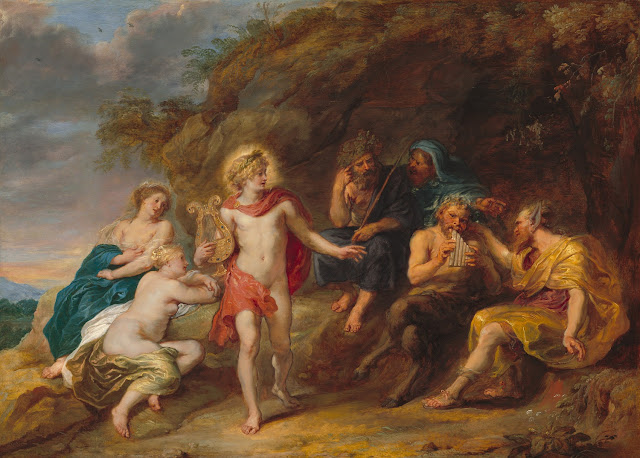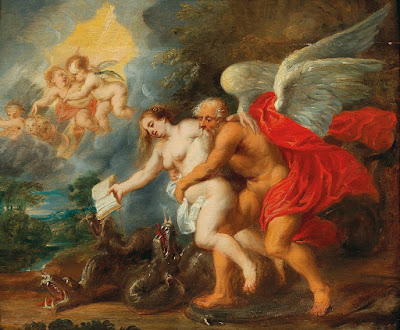 |
| Jan van den Hoecke Communion of the Blessed Frederick of Regensburg ca. 1630-50 oil on canvas private collection |
 |
| Jan van den Hoecke Allegory on Archduke Leopold Wilhelm ca. 1650 oil on canvas Kunsthistorisches Museum, Vienna |
 |
| Jan van den Hoecke Archduke Leopold Wilhelm in Prayer before the Virgin and Child ca. 1650 oil on canvas Kunsthistorisches Museum, Vienna |
 |
| Jan van den Hoecke The Judgment of Midas ca. 1640 oil on canvas National Gallery of Art, Washington DC |
 |
| Jan van den Hoecke Delphic Sibyl ca. 1630-40 oil on canvas private collection |
 |
| Jan van den Hoecke Libyan Sibyl ca. 1630-40 oil on canvas private collection |
 |
| Jan van den Hoecke Allegory of Time and Truth victorious over Envy and Falsehood ca. 1630-50 oil on canvas private collection |
 |
| Jan van den Hoecke Allegory of Time and the Elements ca. 1636-40 oil on canvas (tapestry cartoon) Kunsthistorisches Museum, Vienna |
 |
| Jan van den Hoecke and Paul de Vos Amor Vincit Omnia ca. 1640-50 oil on canvas Kunsthistorisches Museum, Vienna |
 |
| attributed to Jan van den Hoecke Portrait of a Woman ca. 1630-50 oil on canvas private collection |
 |
| Jan van den Hoecke Portrait of Emperor Ferdinand III ca. 1643 oil on canvas Kunsthistorisches Museum, Vienna |
 |
| Jan van den Hoecke Cardinal Infante Ferdinand of Austria ca. 1634-35 oil on canvas Kunsthistorisches Museum, Vienna |
 |
| Jan van den Hoecke The Road to Calvary ca. 1630-50 oil on canvas private collection |
 |
| Jan van den Hoecke Dido and Aeneas ca. 1630-35 oil on canvas Städel Museum, Frankfurt |
 |
| Jan van den Hoecke Hero and Leander ca. 1635-37 oil on canvas Kunsthistorisches Museum, Vienna |
"Jan van den Hoecke was born in Antwerp in 1611. After a stint as an apprentice to his father, the painter Gaspar van den Hoecke, he entered the workshop of Peter Paul Rubens in 1630. Van den Hoecke was greatly influenced stylistically by the baroque master, as is evidenced by the fact that many of his works were once attributed to Rubens. The young artist next traveled to Italy, where he would remain until 1644. There he familiarized himself with the work of Guido Reni and undertook the traditional study of exemplars from antiquity. After relocating to Vienna he entered the service of Emperor Ferdinand III. Ultimately, in 1647, he returned to his native Antwerp, where he became court painter to Archduke Leopold Wilhelm. Throughout Van den Hoecke's career, he remained indebted to the florid manner of Rubens, while at the same time cultivating elements of seventeenth-century Italian classicism."
– adapted from a biographical sketch published by Galerie Lowet de Wotrenge, Antwerp